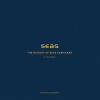John Barrymore, Shakespearean Actor
John Barrymore’s Richard III and Hamlet, first seen in New York during the 1919–20 and 1922–23 seasons, stand as high-water marks of twentieth-century Shakespearean interpretation. Many of the conventions of modern practice can be traced to Barrymore’s performances: he was the first actor to bring the vocal and physical manner of a post-War gentleman to Shakespeare’s tragic protagonists; he was the first to reinterpret time-honored roles in light of modern psychological theory. Michael Morrison reconstructs these historic performances through analysis of the production preparation, audience response, reviews, and memoirs. Tracing the Victorian and Edwardian antecedents of Shakespearean performance, this book situates Barrymore’s distinctive contribution in light of past and ensuing tradition. As well, it provides a biographical sketch of one of the most revered and tragic actors of the twentieth century.
• First in-depth study of Barrymore’s influence on Shakespearean performance • Barrymore is revered as one of the most influential actors of the twentieth century • Includes 35 black and white photographs • ‘The best book about a bygone actor I have read for many years, immensely detailed, magnificently illustrated and hugely readable.’ The Stage • ‘An admirable piece of work.’ The Times Literary Supplement
ContentsPreface and acknowledgements; Part I. Setting the Stage: Prologue: Legacies: 1. The education of an actor, 1882–1919; Part II. The Productions: 2. Richard III, 1920; 3. Hamlet, 1922–1924; 4. The London Hamlet, 1925; Part III. Aftermath: 5. Shakespeare in Hollywood, 1925–1942; Epilogue; Appendix A: The casts; Appendix B: The texts.
Reviews‘The best book about a bygone actor I have read for many years, immensely detailed, magnificently illustrated and hugely readable.’ The Stage
‘An admirable piece of work.’ The Times Literary Supplement
‘Immensely detailed, magnificently illustrated and hugely readable.’ The Stage
- Forlag: Cambridge University Press
- Utgivelsesår: 1999
- Kategori: Biografi
- Lagerstatus: Ikke på lagerVarsle meg når denne kommer på lager
- Antall sider: 416
- ISBN: 9780521629799
- Innbinding: Heftet












